The flag of Liberia emerges as a powerful emblem, encapsulating the country’s journey and enduring ethos. This banner is more than a national symbol; it narrates a tale of steadfastness and the pursuit of freedom.
Flag of Liberia
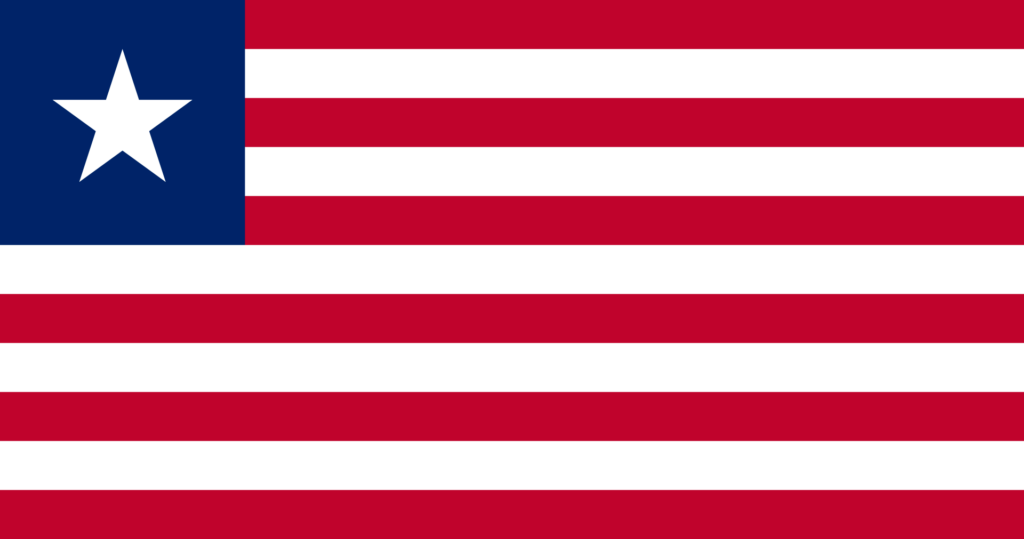
The Liberian flag, characterized by eleven red and white horizontal stripes and a blue square with a single white star in the upper-left corner, uniquely symbolizes the nation’s history.
The stripes reflect the signatories of Liberia’s Declaration of Independence, and the solitary star represents its status as the first independent republic in Africa, known as the “Lone Star.”
Flag of Liberia: Color Palette
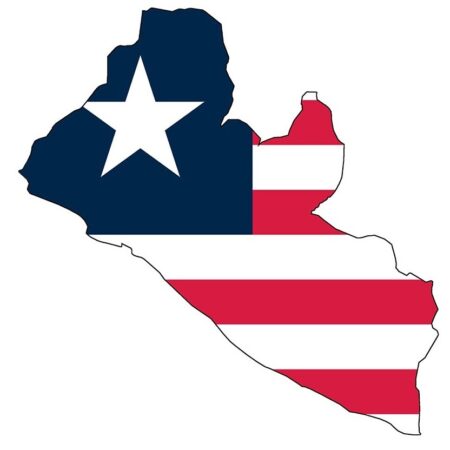
Liberia Flag Emoji: 🇱🇷
The color palette of the Liberian flag is a harmonious blend of red, white, and blue, each chosen for their symbolic resonance. These colors, while they will be explored in depth in the following section, collectively contribute to the flag’s distinct visual identity and encapsulate key aspects of the nation and its heritage.
Meaning of Each Color
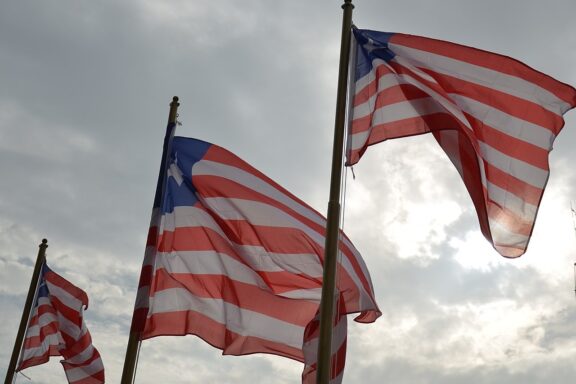
Blue
The blue in the Liberian flag is a symbol of fidelity. Blue has historically been associated with loyalty, trust, and confidence. In Liberia, this color reflects the nation’s commitment to these values.
Bleu also represents the African continent, highlighting Liberia’s identity as a pivotal part of Africa. The blue square in the flag expressly acknowledges Liberia’s role and status within the continent.
White
White in the Liberian flag signifies purity and moral excellence. It embodies the ethical standards and integrity that the nation strives for.
This color, often associated with peace and innocence, reflects Liberia’s aspirations for harmony and righteous conduct within its society and in its relations with the global community.
Red
Red represents valor, indicative of the courage and bravery essential in Liberia’s history. This color often represents strength and resilience, mirroring the nation’s ability to overcome challenges and its persistent spirit in pursuing freedom and progress.
Liberia’s Coat of Arms
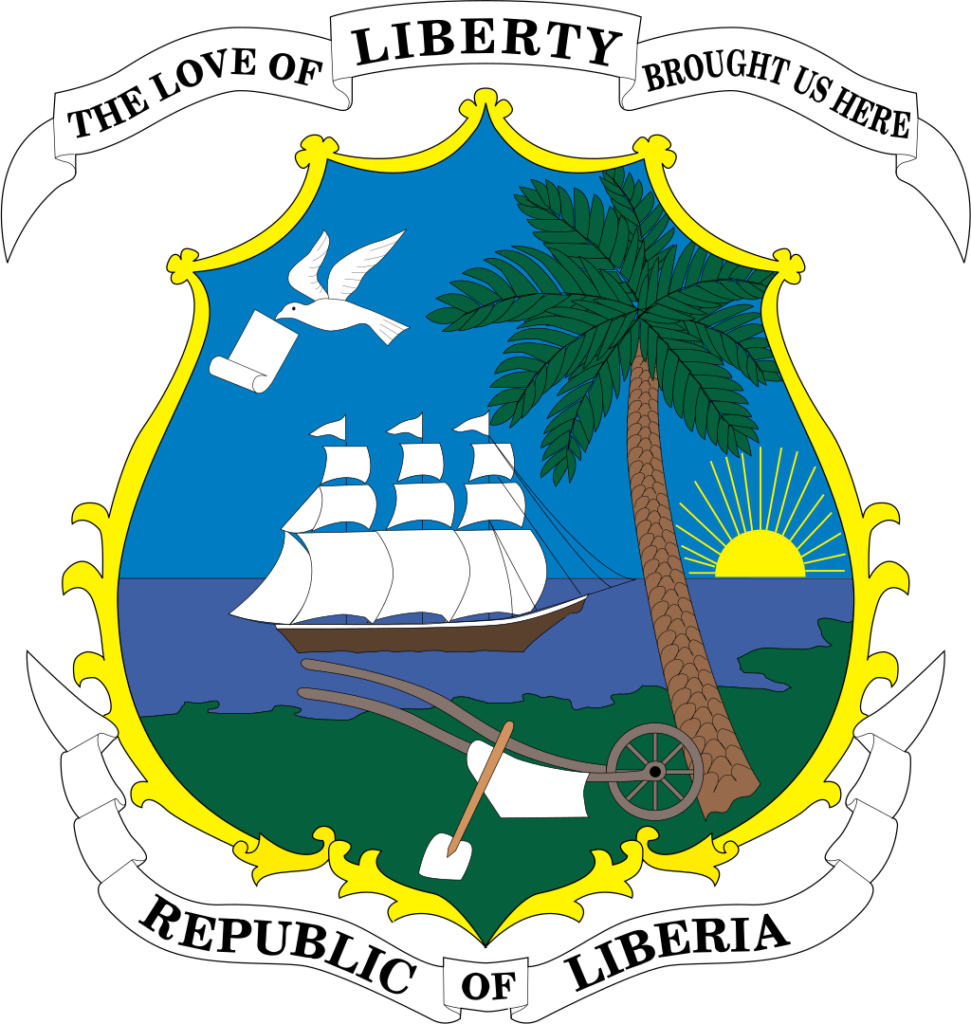
The Coat of Arms of Liberia reflects its history, values of hard work and peace, and deep-rooted connection to its origin as a nation founded by freed slaves seeking liberty.
Key Components of the Coat of Arms of Liberia
- Shield: The shield contains a picture of a 19th-century ship arriving in Liberia, symbolizing the ships that brought freed slaves from the United States to Liberia.
- Plow and Shovel: These tools represent the dignity of labor and the hard work through which the nation will prosper.
- Rising Sun: The rising sun in the background signifies the birth of a nation.
- Palm Tree: A representation of prosperity, the palm tree is Liberia’s most versatile food source.
- White Dove with Scroll: Symbolizing peace, the white dove carries a scroll, indicating the nation’s aspiration for tranquility and harmony.
- Motto: Above the shield appears Liberia’s national motto on a scroll: “The Love of Liberty Brought Us Here.” This motto reflects the foundational ethos of the nation, rooted in its history as a homeland for freed slaves seeking liberty.
- Country’s Name: Below the shield is another scroll with the official name of the country, “Republic of Liberia.”
Historical Evolution and the Meaning Behind Changes
With its distinctive design, the flag of Liberia reflects the nation’s unique history and evolution. Initially, during the Commonwealth of Liberia’s era, the region used a flag similar to that of the United States, representing the American influence and the heritage of the African-American settlers.
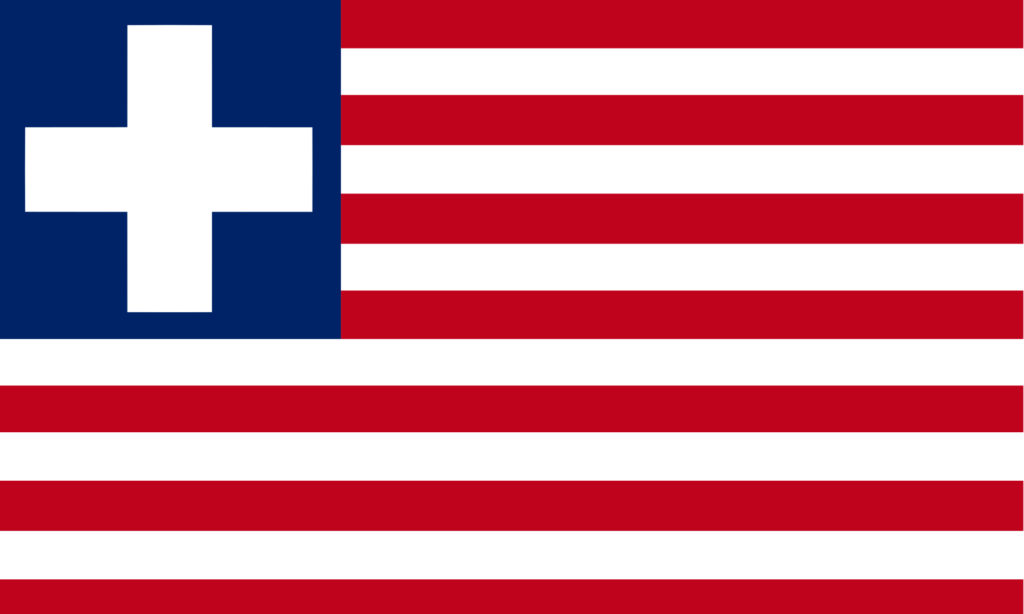
As Liberia moved towards independence, it adopted its current flag, reminiscent of the U.S. flag, to symbolize its origins as a nation founded by freed American slaves.
The design, chosen upon Liberia’s declaration of independence in 1847, features eleven alternating stripes and a blue square with a white star, representing the signatories of Liberia’s status as the first independent republic in Africa.
Remarkably, since its adoption, the Liberian flag has remained consistent in its design, underscoring a stable national identity and the enduring significance of the symbols it carries. The flag’s consistent design reflects Liberia’s enduring values and prosperous past.
Overall Symbolic Meaning of the Flag
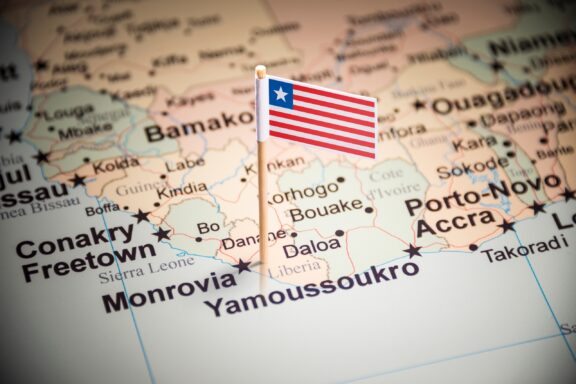
The Liberian flag symbolizes the nation’s historical roots and aspirations for freedom and unity. The flag’s elements, while individually significant, collectively portray Liberia’s path from a colony for freed slaves to an independent republic.
It represents the nation’s resilience, hope, and commitment to democracy, serving as a unifying emblem reflecting Liberia’s spirit and values.
Similar Flags to the Flag of Liberia
The flag of Liberia shares design features with flags from other nations, reflecting historical connections and common design themes. Here’s a look at flags that resemble Liberia’s in various ways.
United States of America
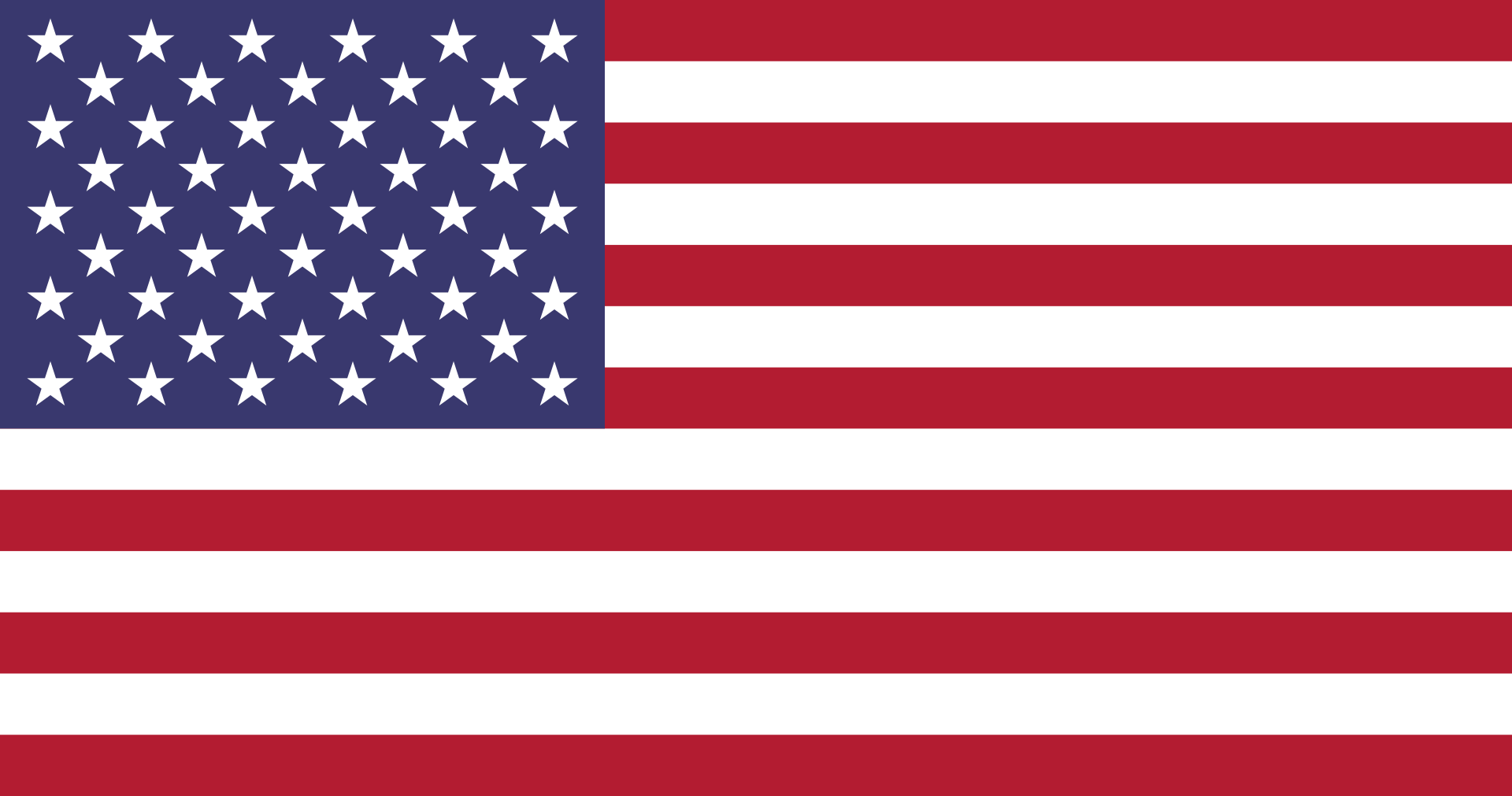
The Liberian flag’s design is a direct homage to the U.S. flag, reflecting freed American and Caribbean slaves who founded the deep historical ties in Liberia.
The Liberian flag’s use of similar stripes and a blue field appears for the nation’s foundational connection with the United States, representing a lasting bond forged from a shared history of struggle and liberation.
Malaysia
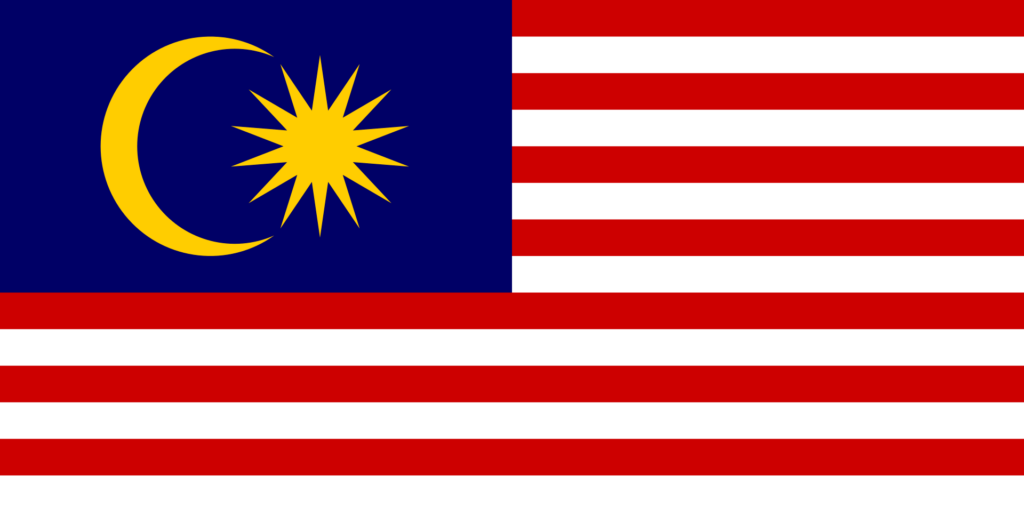
Although there is no direct historical or cultural link between Liberia and Malaysia, their flags share a striking resemblance in design. Both flags’ alternating red and white stripes represent a common aesthetic in flag design, suggesting principles of strength and purity, albeit arising independently in each nation’s history.
Puerto Rico
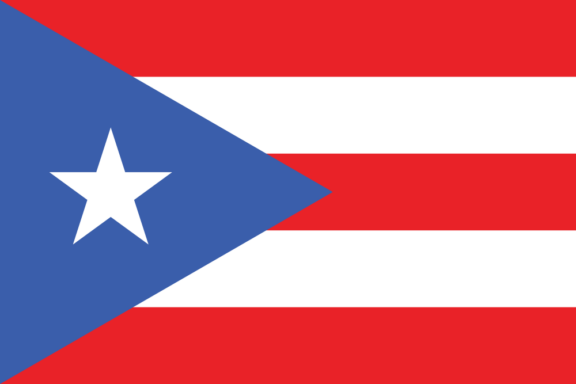
Like Liberia, the Puerto Rican flag features stripes and a triangular section with a different color scheme. This resemblance, while coincidental, showcases a shared preference in flag aesthetics, particularly the use of stripes and a distinct emblematic triangle to convey national identity and values.
Final Thoughts
The Liberian flag symbolizes the nation’s journey towards freedom and unity with its historical ties and unique design. It resonates deeply with its citizens, representing their resilience and pride. It is distinctive in the global array of flags, reflecting Liberia’s singular story and aspirations.
Image Sources and Copyright Information
- Liberian Flags Waving Against Cloudy Sky: © blk24ga/Wikimedia | CC BY 3.0 Unported
- Liberian Flag Pin on Map: © BUTENKOV ALEKSEI/Shutterstock